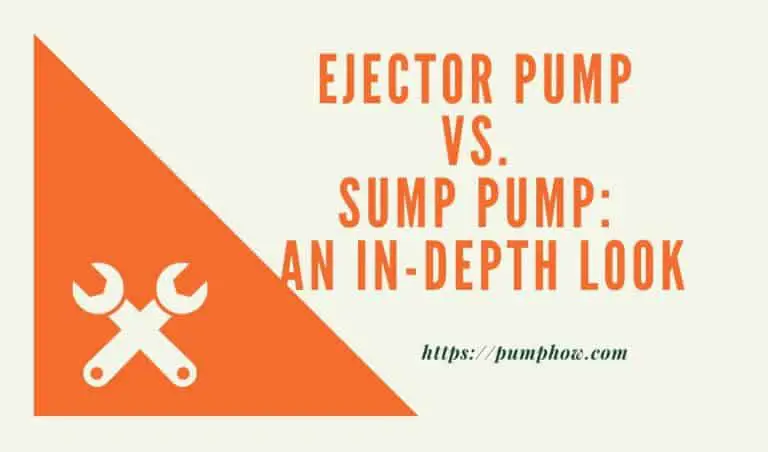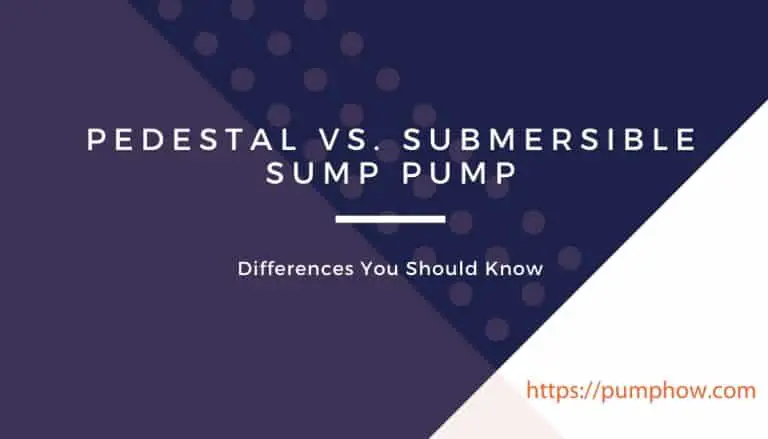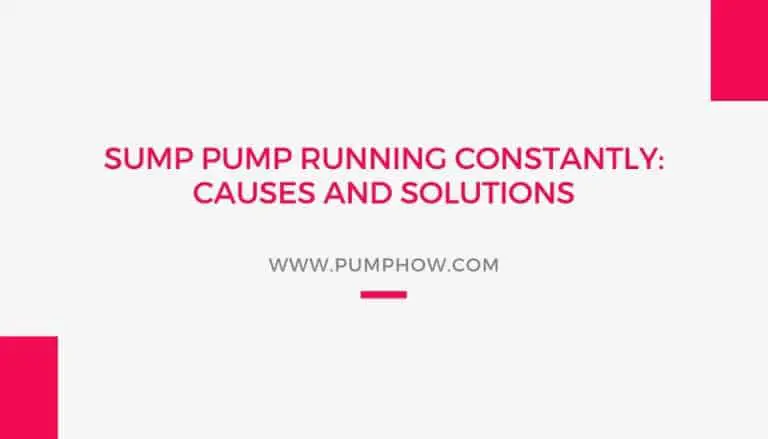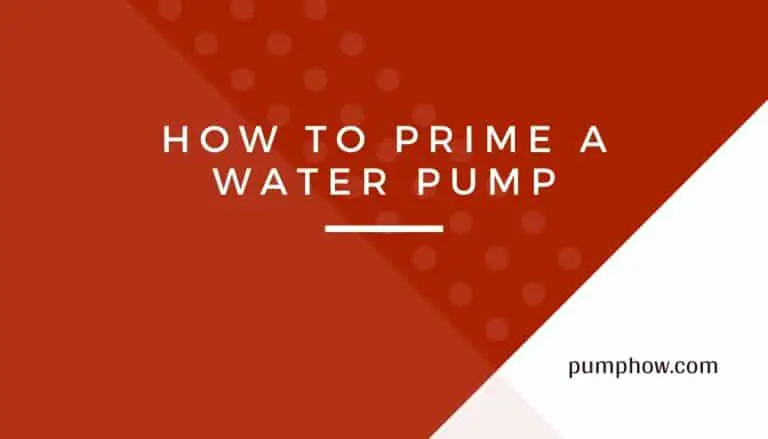The cost of a complete sump pump system and its installation varies by the capacity, type, and brand of the pump you choose, and also the location of your residence. Another important consideration is the employment of labor (DIY or certified contractor) for the job. Other factors include the condition and presence of the drainage system and the basement floor.
So, you see you’ll have to think beyond just the pump or the required labor. Don’t worry yet! This article covers everything about the cost.
We’ve used a lot of numerical information to help you understand the size of the budget you need to get a sump pump installed and replaced. Whatever we’ve presented here is based on the information from a lot of projects and different trusted sources.
So, we can’t guarantee that you’ll need to spend the exact same amount for your own installation or replacement project. There might be slight deviations, but the following figures will surely help you come up with a sufficient budget.
At the outset, we’ll put an overview here to provide you some precise ideas. Then, you’ll have a detailed breakdown.
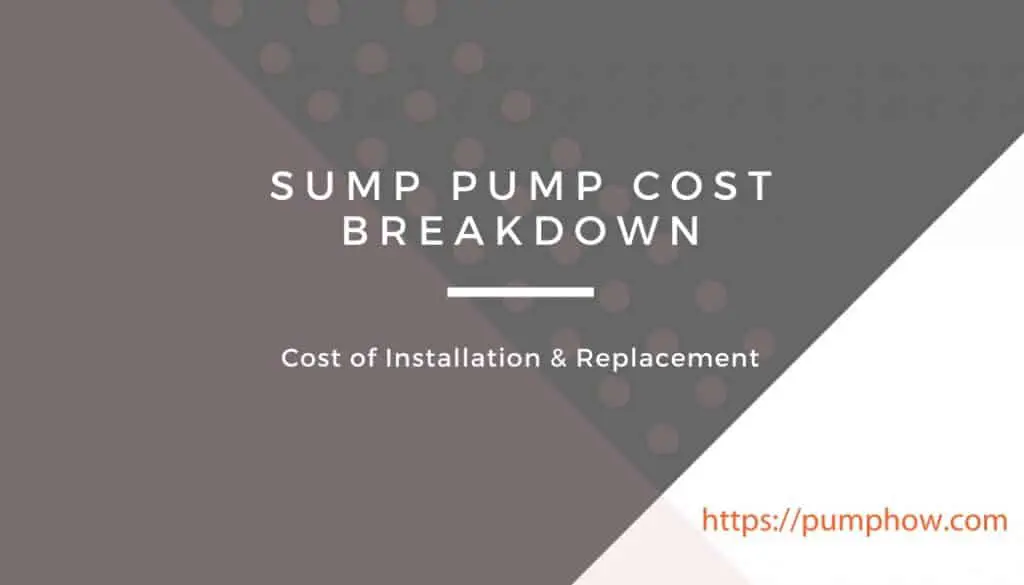
A Basic Sump System costs around $1,000
- Pump: $150 to $200
- Labor and Materials: $700 to $950
- Total: $850 to $1,150
Sump Pumps used by most households cost around $1,500
- Pump: $200 to $450
- Labor and Materials: $1,000 to $1,400
- Total: $1,200 to $1,850
High-End Pumps cost around $2,500
- Pump: $400 to $750
- Labor and Materials: $1,500 to $2,800
- Total: $1,900 to $3,550
Sump Pump Cost Breakdown: Price of a Primary Sump Pump
Since it’s the sump pump that will take up a fair share of your budget, we’ll start with the types, materials, capacities, brands, and other features which are closely associated with the pricing of sump pumps.
Despite the many varieties, only two types stay relevant when it comes to choosing a primary sump, which are pedestal and submersible pumps.
Types
Both types fundamentally work in the same way, but they’re different from each other in terms of capacity, design, durability, and hence the cost.
Of the two types, pedestal pumps are the noisier, less powerful, and expensive while submersibles are the heavy-duty type with almost quiet operation and come at greater expenses. Read our in-depth article on the differences between both pumps for better understanding.
You should be looking at a price anywhere between $130 and $400 for a submersible pump whereas a basic pedestal pump may cost around $80 and it may take up to $200.
Brands
Without what customers think about the dozens of manufacturers, you can’t easily find the one that caters to your special pumping demands. We’ve brought you the name of the top brands in the following table so that you can start looking for their best models right away.
| Manufacturers | Price Range | Known for |
| Basement Watchdog | $120 to $260 | · High-capacity motor with easy-to-use control panel
· Excellent backup pumps |
| Everbilt | $80 to $250 | · Sturdy housing with great durability |
| Flotec | $60 to $500 | · A wide variety of models with heavy-duty motor |
| G green EXPERT | $60 to $100 | · Super affordability |
| PumpSpy | $160 to $500 | · Wi-Fi connectivity and controls
· Smart features |
| Superior Pump | $50 to $400 | · A wide variety of models for all homeowners
· Cast iron builds |
| Zoeller | $180 to $1000+ | · Strong housing (cast iron mostly)
· Long-lasting submersible pumps · Heavy-duty motor |
Note: The pricing information above is based on the listed prices on different e-commerce websites and manufacturers’ websites. So, you might have to see a slightly different tag for any particular model.
Materials
Materials used for the housing and base along with other parts are one of the few things to govern the price and weight of a sump pump. Housing materials are also closely associated with the durability of a pump.
A plastic housing may come at $75. Higher quality accounts for a higher cost up to $200. For a stainless steel housing with a cast iron base, you need to spend at least $150. The sturdiest ones may come built with bronze or cast iron with epoxy coating and cost up to $300.
Capacity or Size
By capacity/size, we actually mean the horsepower of the motor. Modern sumps come with 1/4 HP, 1/3 HP, 1/2 HP, and 3/4 HP motors with each number determining how much water a pump can handle per hour.
- A 1/4 HP motor makes a basic unit that works for homes located in drier areas and requires no more than 1,500 gallons of water per hour to be pumped. It costs $50 to $200.
- A 1/3 HP motor is pretty much the standard that can pump up to 2000 gallons per hour and cost $65 to $350. Both 1/4 HP and 1/3 HP models may require a backup pump during extreme or wet seasons.
- A 1/2 HP motor is desirable in areas where there’s a lot of precipitation and flooding occurs multiple times throughout the year. The capacity can be up to 3,000 gallons per hour, and you may have to spend anywhere from $100 to $500.
- A 3/4 HP motor isn’t very common, but they prove to be valuable during extreme moisture issues, thanks to a large capacity which is up to 4,500 gallons per hour. One of these pumps may cost you from $150 to $600.
Cost of Backup Sump Pumps
These pumps are essential in case you want to get a secondary device that works without depending on anything of the primary pump except the signal that the backup has to be employed. You want to choose one of the two types, such as battery and water-powered pumps.
If you’re interested in the pumping capacity, battery backups are more capable than water-powered models when you want a secondary pump to work alongside the main. The latter may run for as long as you want, but their mediocre pumping capacity makes them a weaker yet more affordable choice.
A battery-operated backup pump may cost from $150 to $400, and the price of a water-powered pump can be anything between $100 and $250.
Installing two different devices (primary and secondary) in separate times may affect the overall cost of the projects. A good way to avoid the unnecessary expense is to buy a combination sump pump which consists of both pumps and often comes at a more affordable price than that of both types combined.
Cost of a Combination Sump Pump
Buying a combo may require a substantial budget, but it pays off in the long run as you can pay for the installation cost only once and the pumps won’t have any compatibility problem. Getting two units from two different brands may not be a good idea if you’ve little to no knowledge about sump pumps.
A sump pump combo with average pumping capacities may cost at least $250, and the price may go as high as $1,000 depending on the build quality and capacities of both pumps. You can go through our guide to buying a good combination sump system for valuable insights into the most popular models around.
Sump Pump Price will change with Smart Features
A typical sump pump features a set of indicators (lights) and different noises to alert the users of any potential problem. Modern units boast so many things which are more than a tad bit of technological development.
Today’s sump pumps, especially the battery backups offer wireless connectivity, smart notifications (for battery life, discharge speed, extended runtime, pumping capacity, etc.), remote control and operation system. Although these features don’t essentially make a high-end device, they certainly add up to your convenience in the course of everyday uses.
A sump pump with only the basic alerts and features may cost around $100 less than the one with all those improvements.
Now that how much you may have to spend is clear, you should learn another side to the cost of this project – installation which costs more than the pump itself does.
How Much Does It Cost to Install a Sump Pump in a Crawl Space?
You need to decide whether you want to take it up or a certified professional will be called on site. This one decision among other factors makes a huge impact on the overall budget of the project.
Labor Cost
If you’re interested in a DIY installation project but can’t actually figure out the essentials and responsibilities, we have a step-by-step sump system installation guide to help absolute beginners to find their way around the job.
Those who choose a DIY route should consider the cost of renting tools like concrete saw or jackhammer and other hardware tools. Think about another $100-$200 unless you already have them at your disposal.
It’s also okay if you want to go further than that. How do you feel about buying the tools yourself? You can use them on other projects as well. Look at this list.
- Jackhammer: $120 to $150
- Hacksaw: $15 to $20
- Screwdrivers: $10
Let’s get right down to the most common way. Should you have to count on an expert’s help, there’s a significant cost involved. Plumbers or basement waterproofing specialists in different states ask for different charges. A pro in Denver may charge from $500 to $2,500 while another in Chicago or Milwaukee would charge from $1,100 to $1,500.
Homes that have a sealed pit with radon pipes or galvanized lines are often very difficult to deal with. Sometimes, the hired professional may have to reroute the electrical lines or dig a little deeper. In these situations, a thousand bucks or a little higher should be the ideal labor cost for most states.
Again, you’ll find people with or without certifications and insurance. Having these credentials and good track record, an expert may wish to receive a decent payment, and you won’t find that unfitting.
Besides the pump and labor cost, there’re several other factors that drive the cost of installation. Let’s check them out.
Type of Basement Floor
The construction or material used for your basement is an important consideration. Dirt basements allow a plumber to dig the basin conveniently, and the cost can be $5 to $10 per linear foot. The depth depends on how far the pipes have to be kept.
If you have a concrete basement and the plumber needs to break it up using a concrete saw or a jackhammer, the cost might increase by $1 to $3 per linear foot. You might want to dig deep inside your basement walls to bury the pipes. Cost, in that case, should remain unchanged.
Drainage System
Homes with a drainage system in place might require some adjustments or changes, and the cost of doing that shouldn’t very high unless any major upgrade isn’t expected.
However, digging a drainage system from scratch involves a considerable cost which can be anywhere between $4,000 and $10,000. You may not be happy about such a hassle, but there’s a lot to do from busting concrete and soil maintaining up to 24-inch width and adding layers of gravel to using drain tiles, putting a sump basin, and finally making up for the removed concrete.
The width of the drainage pipes is also important because it determines how much water your pump can get rid of.
Sump Basin
You can dig a hole to make the basin and place a plastic bucket there. Choose plastic that doesn’t collapse or flex too easily. The basin may cost from $25 to $60 depending on the size. For example, a standard 30-inch basin costs $30, but a heavy-duty or high-quality bucket may cost up to $60 or a little more.
Cost of Other Materials
A few items like PVC pipes, caulking, white cement, glue, etc. are also required. Most households keep these items for different purposes. If you have to buy them, the cost can be around $50.
Sump Pump Cost Breakdown: Replacement
Replacement shouldn’t as expensive as the first-time installation unless of course, you’re looking for any major upgrade to your basement waterproofing arrangements.
If you’re planning a replacement, it means you already have the sump pit and drainage system ready. The cost of labor shouldn’t be higher than $150 to $250. On top of that, a sump pump needs to be purchased, and the cost has been discussed above.
What if you’re not looking for the replacement of one particular component instead of the entire system? Ideas about the individual cost of those components come handy at this point.
- An impeller costs around $15 and up to $40 (a complete kit).
- A check valve costs about $20 with the most resilient ones up to $85.
- A float switch may cost anywhere between $35 and $80.
- A piggyback switch comes at $40 to $50.
Final Words
As much useful as you find it to know about the installation cost before buying a sump system, you should have a thorough idea about what it means to keep the pump running well enough to keep your basement dry and protected.
On average, homeowners have to spend around $350 to $500 for maintenance and repairs excluding the cost of materials and the parts of the pump.
Although maintenance or repair isn’t something you would love to consider right after installing a pump, you can keep yourself one step ahead facing an unforeseeable situation.
Can you prepare yourself better for the project now? Just tell us if anything specific bothers you.

